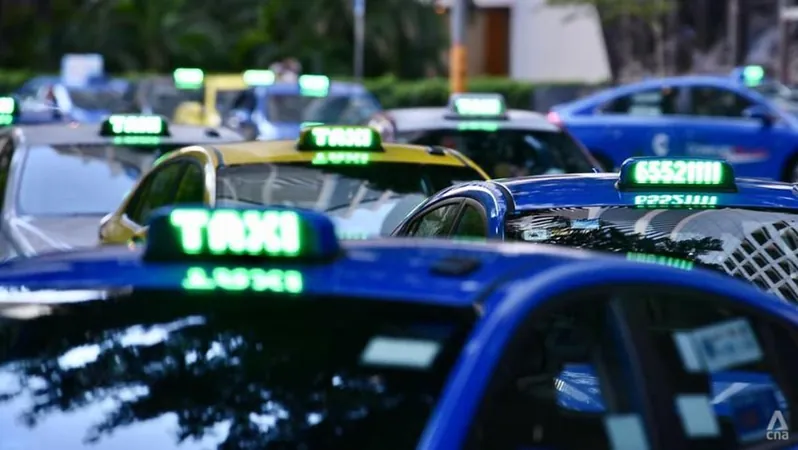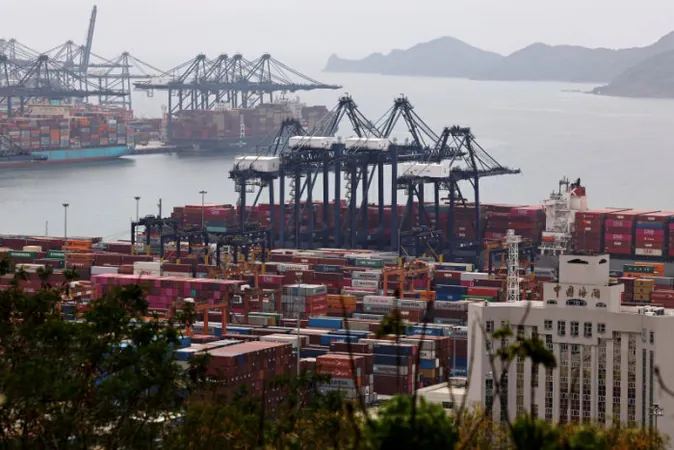
GrabCab's Entry Shakes Up Singapore's Taxi Landscape: What It Means for Drivers and Riders
2025-04-02
Author: Daniel
Introduction
The arrival of GrabCab in Singapore’s taxi industry is set to transform the market dynamics significantly, attracting drivers from established competitors and challenging traditional taxi operators' strategies. Analysts have pointed out that Grab's vast resources enable it to provide lucrative incentives for drivers hoping to shift allegiance from existing services.
GrabCab, a new subsidiary of the ride-hailing giant Grab, received its street-hail license from the Land Transport Authority (LTA), officially making it Singapore's sixth licensed taxi operator. The company plans to develop a fleet of at least 800 vehicles within a three-year grace period and aims to enhance its offering by integrating an environmentally friendly fleet of low and zero-emission hybrid and electric vehicles.
Incentives for Drivers and Competition Ahead
Transport experts suggest that GrabCab will not be operating like a traditional taxi service. Instead of merely running a fleet, it has the potential to integrate driver incentives through its existing digital platform. Associate Professor Walter Theseira from the Singapore University of Social Sciences explained that GrabCab could attract private hire drivers to transition into taxi driving by providing competitive rental options, which might include lower rates or rebates tied to service levels on the platform.
As the competition heats up, existing taxi operators may face pressure on usage rates and rental yields. ComfortDelGro, the largest taxi operator in Singapore, is already responding by reinforcing its commitment to driver and customer service while acknowledging that market competition is inevitable.
Will Taxi Fares and Driver Salaries Change?
Despite the competitive landscape, experts predict that taxi fares and driver salaries are unlikely to drop. With consumers typically unwilling to wait for cheaper options in the street-hail market, fare structures are expected to align closely with the market leader. Similarly, driver earnings should remain fairly stable, as drastic changes by GrabCab to compete on price could dissuade drivers from joining or remaining with the service.
“Instead of lowering fares, Grab may enhance driver profits through rental incentives within its flexible model,” noted Assoc Prof Theseira. "If GrabCab manages to successfully lower operating costs, taxi drivers could benefit from improved earnings while still attracting customers."
The What-If Scenario: Must GrabCab Adapt?
GrabCab’s business model raises questions about how it will function in a saturated market with existing operators. In particular, there’s curiosity about how many drivers it can entice back into taxi operations, especially as many have left the profession during the pandemic due to retirement and other shifts in labor dynamics.
Industry insiders indicate that GrabCab's strategy could foster greater stability in taxi service availability, particularly useful during peak hours and in areas where traditional services may falter.
What Lies Ahead: A New Era for Taxi Services?
Grab's entry signals a possible renaissance in Singapore's taxi sector. Analysts are keen to observe how more drivers may be encouraged to enter the profession again, especially after the pandemic's toll.
The Push for greener or more diverse vehicle options, along with competitive incentives, could potentially not only elevate driver satisfaction but also improve service levels for customers. GrabCab’s operations might also press traditional taxi services to innovate or enhance their offerings to retain their customer base.
Conclusion
In conclusion, while the immediate impacts of GrabCab remain to be fully seen, the shift it brings could lead to more choices for consumers and a more attractive working environment for taxi drivers. As competition grows, all eyes will be on the evolution of taxi services across Singapore—buckle up for the ride!




 Brasil (PT)
Brasil (PT)
 Canada (EN)
Canada (EN)
 Chile (ES)
Chile (ES)
 Česko (CS)
Česko (CS)
 대한민국 (KO)
대한민국 (KO)
 España (ES)
España (ES)
 France (FR)
France (FR)
 Hong Kong (EN)
Hong Kong (EN)
 Italia (IT)
Italia (IT)
 日本 (JA)
日本 (JA)
 Magyarország (HU)
Magyarország (HU)
 Norge (NO)
Norge (NO)
 Polska (PL)
Polska (PL)
 Schweiz (DE)
Schweiz (DE)
 Singapore (EN)
Singapore (EN)
 Sverige (SV)
Sverige (SV)
 Suomi (FI)
Suomi (FI)
 Türkiye (TR)
Türkiye (TR)
 الإمارات العربية المتحدة (AR)
الإمارات العربية المتحدة (AR)